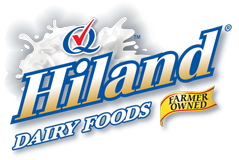Are You a Dairy Know-it-All?
There’s more to dairy than meets the eye, you know. It’s not just a delicious treat that comes in a glass or on top of your favorite pizza. Here are a few more facts to help you brush up on dairy and what it offers to you and your family.
What nutrients do dairy foods provide?
Together, Hiland Dairy milk, cheese and yogurt provide a unique package of essential nutrients, which can include calcium, potassium, phosphorous, protein, vitamins A, D and B12, riboflavin and niacin (or niacin equivalents). From helping repair muscle tissue to maintaining healthy red blood cells, the nine nutrients in milk work together to help keep the body in optimal health.
Protein is a powerhouse nutrient for our bodies. Not only does it help us feel fuller longer, it also protects muscles after we work out, strengthens the immune system and regulates the metabolism as we get older.
Are dairy foods a good source of protein?
The protein naturally found in Hiland Dairy milk and other dairy foods helps build strong muscles for our active lifestyles. Dairy foods are a tasty, convenient and cost-effective way to power up with protein throughout the day. For example, milk provides 8 grams of high quality protein while almond milks and other non-dairy milk alternatives may provide only one gram. And cheese is a portable protein snack, contributing high quality protein as well as calcium, phosphorus and vitamin A.
What are the daily recommended servings of dairy products?
The Dietary Guidelines call for families to increase their intake of low-fat or fat-free milk, cheese and yogurt, with a goal of three servings every day for people ages nine and older. Published by the USDA and U.S. Department of Health and Human Services, this science-based report found that 85 percent of Americans are falling short of the current dairy recommendations. Most Americans need just one more serving a day to meet recommended dietary goals.
Thank you for signing up!

